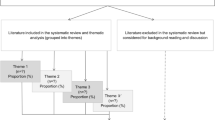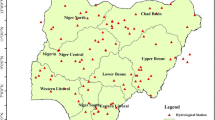Abstract
Regional climate models that take land use and land cover changes into account indicate a general decrease in rainfall and prominent surface heating in sub-Saharan Africa until 2050 (see sect. II-3.2). The high population growth predicted in this period is expected to cause rapid land use changes and to strongly influence water availability and demand. In this context, the IMPETUS research project was not intended to offer a prescription of rigid options for sustainable management of the hydrological cycle. Rather, it was intended to support the decisionmaking process within project countries. For this purpose, tools have been developed that allow for the comparison and balancing of different options with the aid of Spatial Decision Support Systems (SDSSs), Information Systems (ISs), and Monitoring Tools (MTs). The intention is to help decision makers by providing them with efficient and user-friendly tools for analyzing and managing decisionmaking problems and underlying phenomena. Target areas for this research were the Ouémé basin in Benin and the Drâa catchment in Morocco. Target years were chosen as 2025 for Benin and 2020 for Morocco based on pre-existing, long-term government strategy papers.
Preview
Unable to display preview. Download preview PDF.
Similar content being viewed by others
Author information
Authors and Affiliations
Editor information
Editors and Affiliations
Rights and permissions
Copyright information
© 2010 Springer Berlin Heidelberg
About this chapter
Cite this chapter
Speth, P., Diekkrüger, B. (2010). Introduction: The IMPETUS method. In: Speth, P., Christoph, M., Diekkrüger, B. (eds) Impacts of Global Change on the Hydrological Cycle in West and Northwest Africa. Springer, Berlin, Heidelberg. https://doi.org/10.1007/978-3-642-12957-5_10
Download citation
DOI: https://doi.org/10.1007/978-3-642-12957-5_10
Published:
Publisher Name: Springer, Berlin, Heidelberg
Print ISBN: 978-3-642-12956-8
Online ISBN: 978-3-642-12957-5
eBook Packages: Earth and Environmental ScienceEarth and Environmental Science (R0)




